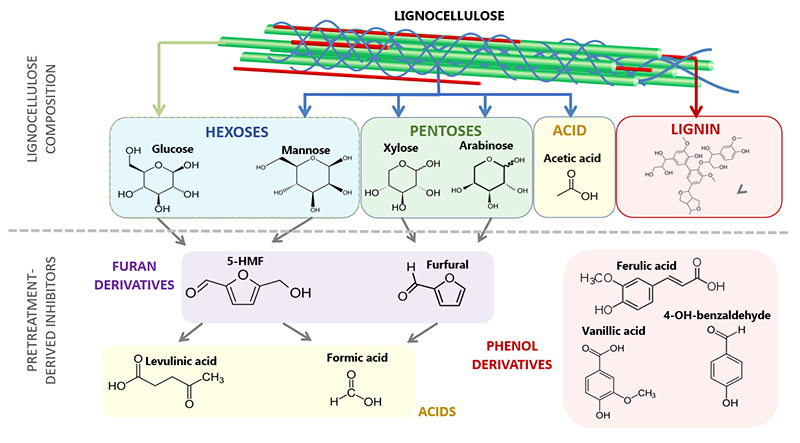Thesis prepared by Alexandre Delarouzée, winner of the 2023 Yves Chauvin prize: « Ingénierie métabolique de Clostridium acetobutylicum pour l'utilisation de sucres issus de biomasse lignocellulosique » ("Metabolic engineering of Clostridium acetobutylicum for the use of sugars from lignocellulosic biomass")
Within the context of the energy transition, new bioprocesses are emerging as substitutes for processes using fossil resources. For example, Clostridium acetobutylicum is a microorganism capable of converting the large variety of sugars derived from lignocellulosic biomass into a raft of bio-based substances, via fermentation. This makes it a potential candidate for producing biofuels and/or chemical intermediates that can be used by industry.
However, this use of C. acetobutylicum comes up against two obstacles. Firstly, the use of different sugars by this microorganism is hierarchized by a mechanism known as “catabolic repression”, meaning that these sugars are assimilated sequentially rather than simultaneously. This characteristic limits the development of an efficient, continuously fed fermentation process. Secondly, the extraction of this mixture of fermentable sugars requires a biomass pre-treatment step that generates chemical compounds that are toxic for the microorganism, thereby having a negative impact on the fermentation process (figure).
This thesis research used various genetic engineering approaches to overcome both these problems. First of all, a series of genetic modifications made it possible to modify the metabolism of C. acetobutylicum so that it simultaneously consumes the majority of sugars derived from a reference lignocellulosic biomass [1]. In parallel, adaptive evolution methods in bioreactors made it possible to obtain microorganisms resistant to different growth inhibitors and capable of fermenting pre-treated biomass-type industrial substrates. Lastly, for the third part of the thesis, the doctoral researcher developed a genetic tool making it possible to list all the genes that are essential in the C. acetobutylicumgenome [2]. This mapping process results in a crucial database that can be used to determine the priority genetic targets with a view to the rational improvement of this biocatalyst.
The discoveries made in the three areas explored pave the way for the use of C. acetobutylicum for the efficient conversion of lignocellulosic substrates in order to produce second-generation bio-based substances in industrial conditions. Future research conducted at IFPEN’s Biotech Department will focus, among other things, on expanding the range of substances that can be produced using this microorganism.

References
-
Delarouzée A, Lopes Ferreira N, Wasels F. (2023). Alleviation of Carbon Catabolite Repression through araR and xylR Inactivation in Clostridium acetobutylicum DSM 792. Applied and Environmental Microbiology, 89(3), e02135-22.
>> https://doi.org/10.1128/aem.02135-22
-
Delarouzée A, Lopes Ferreira N, Wasels F. Gene essentiality in Clostridium acetobutylicum DSM 792. Submitted to Applied and Environmental Microbiology.
Scientific contact: francois.wasels@ifpen.fr





